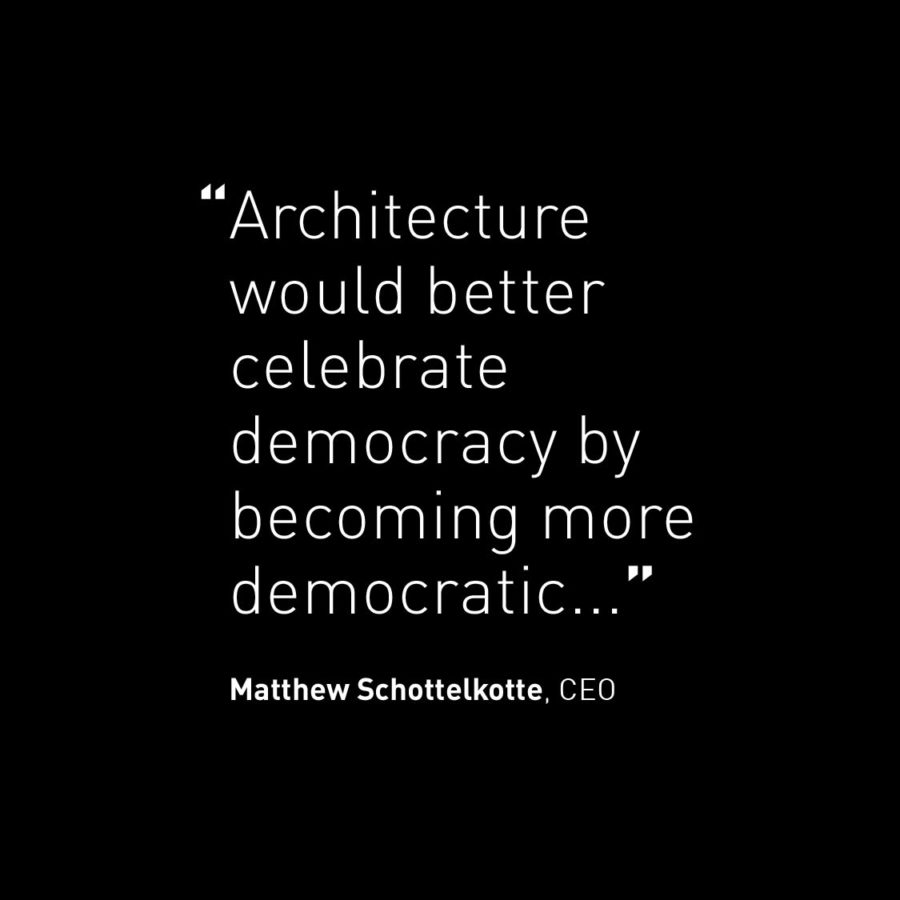Insights
Feb 21, 2020 _ insights
Building a Better Democracy
As CEO of GBBN, I write to announce our firm’s unequivocal opposition to the draft executive order, titled Making Federal Buildings Beautiful Again, which dictates “classical architectural style shall be the preferred and default style” for all federal projects.
The order claims to foster architecture in celebration of American democracy. It does not. If implemented, it would foreclose any meaningful community engagement in the design of federal buildings, elevating presidential decree over the voice of impacted communities while nostalgically evoking a problematic, racial past.
Our opposition is not rooted in an objection to the neoclassical style per se. Excellent and important neoclassical buildings should be preserved. Here in Cincinnati, GBBN is working to preserve the Taft Museum and PNC Tower (both examples of this style).
But to dictate the creation of new buildings in this style denies important current and future contributions of diverse, American cultural traditions. The Lincoln Memorial is quite moving, but how many tears have been shed at Maya Lin’s Vietnam Memorial or Adjaye Associates’ National Museum of African American History & Culture? No style has a monopoly on beauty. As architects, we understand that the merit of any building is in its response to the needs of its community and context and its aspirations for a more equitable and just society.
Dictating a building’s style without considering its context or use—and only allowing community input after the parameters of the design are set—prevents those most impacted by the design from having a voice in determining what’s built in the place where they live and work. This is not a celebration of democracy, but its violation. It will interfere with the ability of architects to collaborate with communities in order to design solutions that meet their needs. Rather than setting up barriers to the process of community engagement (which is far too meager in most building projects anyway), we should democratize the design process and ensure federal buildings truly serve all people of this country.
It’s also important to acknowledge the complex historical legacy of neoclassical architecture in the United States. Though neoclassical designs such as the Capitol Building or the White House are often celebrated as symbols of democracy, they are also haunted by an undemocratic, racial history. As the National Organization of Minority Architects (NOMA) and the Architecture Lobby have pointed out, the embrace of neoclassical architecture in the United States was part of an effort to elevate “white” Americans over racially-subjugated groups as heirs of Greco-Roman culture. Given this history, the executive order’s nostalgic imposition of this style on communities across the country—which it does in the name of an anonymous, undefined “American people”—risks reiterating past exclusions and communicating to historically-marginalized groups that these spaces are not for them.
Rather than insisting on mechanically reproducing past architectural forms (which would likely appear inauthentic), architects should be free to embrace visual evidence of innovation and technology and to display their talent for weaving together art and science as they produce buildings relevant to present and future generations.
Architecture would better celebrate democracy by becoming more democratic, by responding to local communities (rather than presidential decrees), by addressing present needs rather than evoking a narrowly-understood past.




